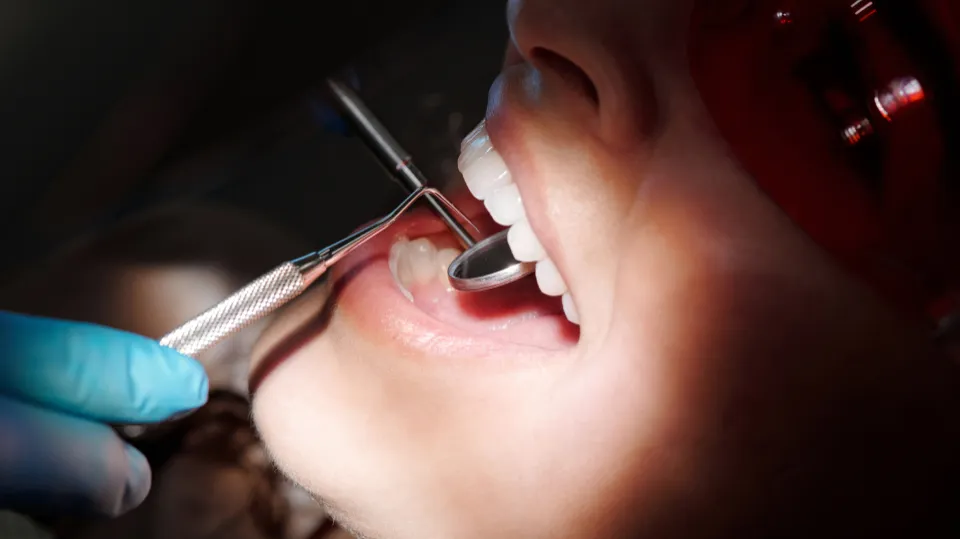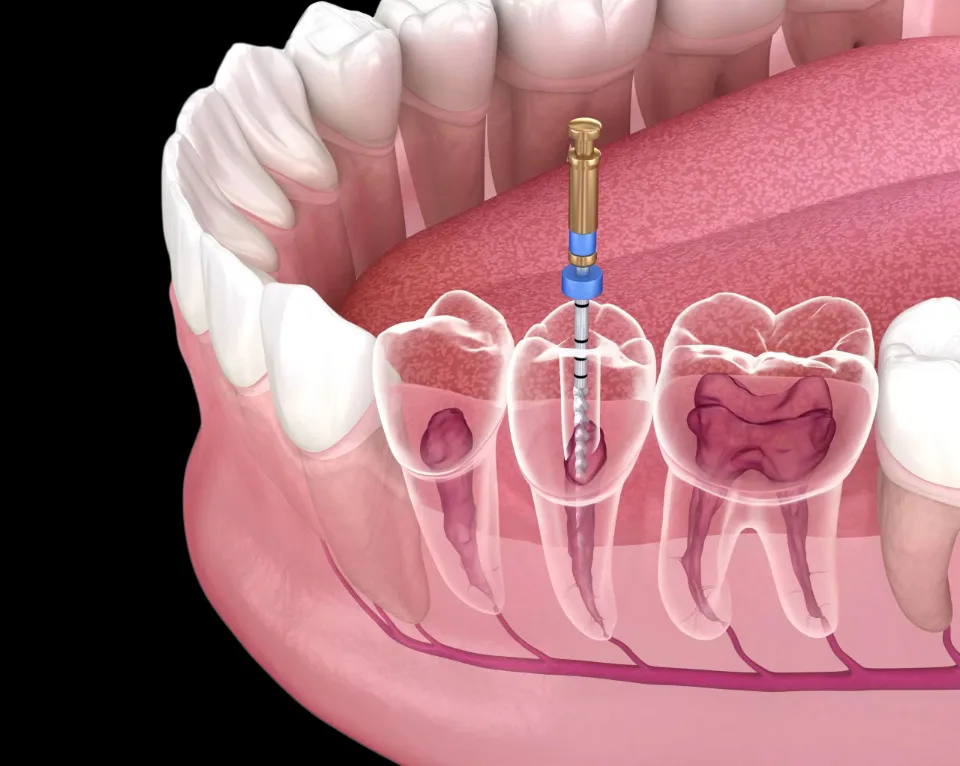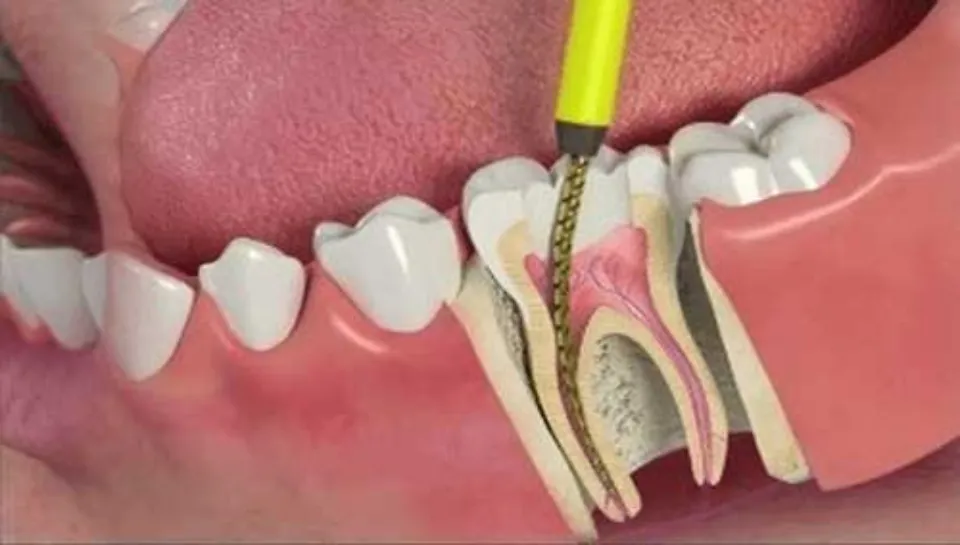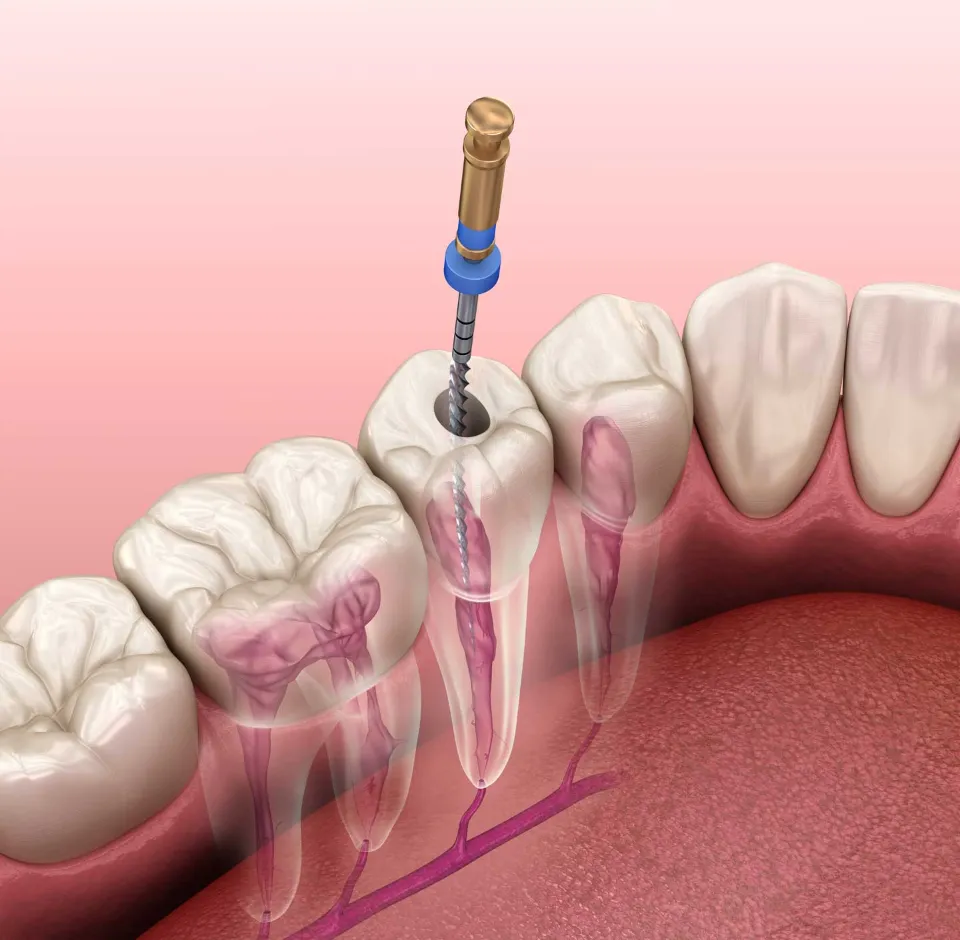
How Long Does a Root Canal Take – Treatment & Side Effects
Infections are sometimes brought on by bacteria getting into the tooth pulp. To save the tooth in this situation, root canal therapy is required. The infected pulp is removed during this procedure, and the tooth is sealed to prevent reinfection.
A root canal typically takes 30 to 60 minutes to complete. It may require up to an hour and a half to treat a larger tooth with multiple roots.
The steps of the procedure, typical times for various teeth, and the potential for multiple visits are all covered in this blog post’s explanation of how long a root canal takes.
What is a Root Canal?
An infected or abscessed tooth can experience pain that is relieved by a root canal procedure. The swollen pulp is removed during the root canal procedure. After disinfecting and cleaning the internal surfaces of the tooth, a filling is then applied to close the opening.
How Long Does a Root Canal Take?
The number of appointments needed for root canal therapy will depend on the severity of the infection in your tooth. The length of a root canal is typically between 30 and 60 minutes. It may require up to an hour and a half to treat a larger tooth with multiple roots.
When is a Root Canal Needed?
If oral bacteria infect the pulp inside your tooth, you will need root canal therapy. When a cavity is neglected for an extended period of time, this typically occurs. Additionally, it might happen if a trauma causes your tooth to crack or sustain damage.

What Are Some Symptoms That Indicate You May Need Root Canal Treatment?
Sometimes an infected tooth goes unnoticed by the patient. However, numerous people report a few symptoms. Signs you need a root canal include:
- Tooth pain that doesn’t go away: Tooth pain is a common symptom of dental issues. You might require root canal therapy if you are experiencing deep tooth pain. Your jaw, face, or additional teeth may also experience discomfort.
- Sensitivity to heat and cold: You may require root canal therapy if your tooth hurts when you eat ice cream or drink hot coffee. This is especially true if the pain lasts for a prolonged period of time.
- Swollen gums: Pus may build up around an infected tooth. Puffy, swollen, or tender gums may result from this.
- Pimple on the gums: On your gums, you might get a pimple or a boil. There may be a leakage of pus from the infected tooth, leaving behind an unappealing taste or odor.
- Swollen jaw: Sometimes the area doesn’t drain all of the pus. You might notice a noticeable swelling in your jaw as a result.
- Tooth discoloration: Your tooth may appear darker if the pulp of the tooth becomes infected. Because the tooth’s blood supply is inadequate, this happens.
- Pain when pressure is applied: The pulp’s surrounding nerves may be damaged if you experience pain when you bite down on food or touch your tooth.
- A chipped or cracked tooth: Bacteria can get all the way into the tooth pulp if you’ve cracked a tooth in an accident, while playing sports, or even just by biting down on something hard.
- Loose tooth: A tooth that is infected might feel looser. This is so that the tooth’s supporting bone won’t become too soft from the pus from the infected pulp.
How Common is Root Canal Therapy?
Over 41,000 root canal procedures are carried out daily in the US, according to the American Association of Endodontists. In other words, more than 15 million root canals are performed annually.
How Should I Prepare for Root Canal Treatment?
Your healthcare provider can address any inquiries you may have before starting the root canal procedure. Here are a few things you can do to prepare for your root canal treatment:
- Take all medications as prescribed: In particular, if there is a significant amount of infection present, you might be prescribed antibiotics or anti-inflammatory drugs a few days prior to your appointment.
- Don’t smoke: The healing process of your body is hampered by tobacco products. Avoid smoking for a few days prior to your root canal appointment, and if possible, quit completely.
- Eat a healthy meal: Eat something before your appointment because the local anesthesia used for root canal therapy will cause your mouth to be numb for a few hours.
What Happens During the Root Canal Process?
Your doctor will take dental X-rays of the affected tooth before starting the root canal procedure. This enables the extent of the damage to be ascertained and confirms that root canal therapy is the best course of action. Here are the steps that will be completed during your root canal procedure:
- Anesthesia. The infected tooth and the gums around it are first given local anesthesia to make them feel better. In addition to nitrous oxide, oral sedatives, and intravenous (IV) sedation, there are other drugs that are used in dentistry to help you unwind. If you have dental anxiety, your doctor might suggest sedation.
- Dental dam placement. A small rubber dam is placed over the affected area before root canal therapy begins. As a result, the tooth is kept separate from the procedure and is kept dry.
- Access hole. To access the pulp, a small hole is then created in the tooth’s crown.
- Pulp removal. The nerves, blood vessels, and tissues within the tooth are removed using tiny dental tools.
- Shaping the canals. The pulp chamber and root canals are cleaned, sanitized, and shaped after the pulp has been eliminated.
- Filling the canals. A flexible, rubbery dental material known as gutta-percha is then used to fill the empty canals.
- Sealing the tooth. To seal the tooth and stop bacteria from re-entering, a temporary dental filling is then put in.
- placing the last restoration. To protect the treated tooth and fix your bite, you’ll typically need a dental crown. Crown fabrication typically takes two to three weeks because they are made to order. The temporary filling is taken out when your permanent crown is prepared, and the permanent crown is then put in its place. You might occasionally be able to get a crown at the same visit.
Do Root Canals Hurt?
Many people are concerned that they will experience tooth pain following root canal therapy. However, the majority of patients experience immediate relief after treatment because the infection’s source is eliminated during the procedure. Call your healthcare provider as soon as you feel throbbing pain following a root canal.

What Should I Expect After a Root Canal?
After a root canal, you shouldn’t experience severe pain, but you might experience sensitivity for the first few days. Prescription or over-the-counter pain relievers can effectively manage these symptoms, which are normal. The majority of the time, side effects disappear after one to two weeks.
Who Should Perform My Root Canal Procedure?
A general dentist or an endodontist (a specialist in root canals) performs root canal therapy. Because they have fewer roots, teeth near the front of the mouth are frequently treatable by general dentists. You might be referred to an endodontist if you require root canal therapy on a tooth with multiple roots or if your case is complex.
What Are the Advantages of Having a Root Canal Procedure?
Choosing root canal therapy has a number of advantages. This treatment can:
- Ensure that no additional teeth become infected.
- Reduce the signs and symptoms of a tooth infection.
- decrease the chance of jawbone damage.
- stop the need for tooth extractions.
Are Root Canals Safe?
Root canal therapy is thought to be both secure and efficient. With up to 98% success rates, this procedure is impressive.
Read More: Are Root Canal Safe
What Are Common Failed Root Canal Symptoms?
In some cases, root canal complications can happen. This is especially true if the damage to your tooth precludes this kind of treatment. Failed root canal symptoms include:
- Pain.
- Swollen gums.
- Pus or drainage.
- Tooth discoloration.
- on the gums, a boil or pimple.
- Sinus problems.
What If My Root Canal Fails?
Your healthcare provider will discuss your options with you if your root canal doesn’t work. Revision of a root canal may be necessary in some circumstances. It might also be time to talk about other options.
What Are the Alternatives to Root Canal Treatment?
Tooth extraction is the only remedy for root canal therapy. It’s preferable to keep natural teeth whenever possible, but in some cases, extraction may be necessary to protect your oral health.
If you are not a good candidate for root canal therapy, you can have the tooth extracted and replaced with a dental implant, dental bridge, or partial. Call your healthcare provider to find out more about root canal vs. extraction.
How Long Does Root Canal Recovery Take?
Recovery from a root canal typically takes less than a week. A few days of minor discomfort are possible, but this can be treated with medication. Call a medical professional if you experience severe pain or discomfort for more than a week.
Can I Eat After a Root Canal?
Yes, but it’s best to wait until the numbness subsides. Ordinarily, the anesthesia’s effects last for a few hours.
For the first few days, stick to softer foods like pasta, mashed potatoes, and yogurt. As your comfort level increases, gradually introduce solid foods.
Additionally, you should avoid biting or chewing on the tooth that has received treatment. Until your permanent dental restoration is in place, try to chew with the opposite side of your mouth.
Can You Drive After a Root Canal?
You may be able to drive yourself to and from your appointment if you underwent a procedure while under local anesthesia or nitrous oxide. Oral or IV sedation patients will require a friend or relative to drive them home.
Can You Smoke After a Root Canal?
Smoking hinders the healing process and raises the possibility that you’ll require additional dental work in the future, so it isn’t advised.

When Can I Resume Work, School Or Other Activities?
After receiving a root canal, most patients are able to return to work or school the following day. To recover completely, though, you might need an extra day or two if you underwent sedation during your dental procedure.
What Are Some Root Canal Aftercare Tips?
It’s crucial to maintain the cleanliness of the area after root canal therapy. To prevent the spread of bacteria, regularly brush, floss, and use an antibacterial mouthwash. You should refrain from chewing on the treated tooth until the permanent crown is in place if you still have a temporary filling in place.
How Long Do the Results of a Root Canal Last?
Results aren’t guaranteed with dental procedures, as they never are. The results of root canal therapy, on the other hand, can last a very long time—even the rest of your life—if it is done properly.
When Should I See My Healthcare Provider?
Call your doctor right away if you experience any root canal symptoms, such as tooth pain, swelling, an unpleasant aftertaste, or any other warning signs. An infected tooth has a better chance of being saved if it is treated quickly.
Regular dental checkups are very important for lowering the risk of infection. Your healthcare professional can identify issues during these visits early on, before they get worse.
Are Root Canals Necessary?
Teeth don’t heal by themselves like other body parts do, especially after they become infected. If infection and inflammation are not treated, they can spread to other tissues, teeth, or even other parts of your mouth. Because neither cleanings nor fillings completely remove the damaged pulp, preserving a natural tooth requires a root canal. The removal of the entire tooth is the only alternative to a root canal. A tooth extraction requires replacing the missing tooth with an implant, crown, bridge, or partial denture in order to maintain proper oral function. This adds to the cost, difficulty, and time required compared to a root canal.
In Conclusion
Depending on the number of teeth that need to be cleaned, the seriousness of the issue being treated, and whether the crown will be placed during the first visit or the second, root canals can take anywhere from 30 minutes to as long as several hours. A straightforward root canal procedure should typically take 30 minutes to an hour, requiring 1-2 appointments.





I find it fascinating that a root canal treatment can help you save your decaying teeth. My friend is interested in helping his uncle regain his self-esteem. I think it would be a good idea for them to visit a dentist that can do this for their tooth.